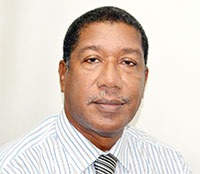There is no other functional part of the human body that is lost as widespread as the teeth.
A high percentage of people lose their natural teeth during their lifetime because of accidents, tooth decay, gum and bone disease, or other reasons. Although there are numerous solutions for replacing several teeth, dental implants are an excellent alternative although they are relatively expensive. With missing teeth, even if the person is not aware of it, there is a collapse of facial form in addition to mal function with respect to eating and speaking.
Although not as severe as the facial changes caused by loss of all teeth, losing a few teeth also produces a sunken facial look and the appearance of a smile with a few missing teeth is considered unacceptable by most people. In fact, in most societies, people who present an appearance with missing teeth is either considered uneducated or poor. Depression around the mouth area makes one appear older than they really are.
When a few teeth are removed there is bone shrinkage and the supporting bone structure becomes smaller from then on, leaving a defect in contour in that area. The result in reducing eating efficiency is directly related to the number of teeth lost. After removal of many teeth, chewing efficiency is reduced significantly although removal of one or a few teeth does not seem to cause a major loss of chewing effectiveness. The appearance of the smile is the negative characteristics caused by removal of a few teeth.
However, if for whatever reason you have had numerous teeth removed or otherwise lost, you have alternatives. These include Traditional Fixed Partial Denture (Bridge) which essentially attaches to the contiguous teeth remaining in the mouth. You cannot remove this type prosthesis. Then there is the traditional removable partial denture which rests on, but does not attach to, the remaining teeth in the mouth. You can remove this prosthesis at will for cleaning. It is simply called a removable denture and is the cheapest and therefore most common means of replacing lost teeth.
Then there is a more sophisticated and expensive partial denture. These involve implants which is basically a removable partial denture that rests on, and is retained by, implants and the remaining natural teeth. You can remove this prosthesis at will for cleaning. These dentures stay in the mouth mouth more firmly, appear more natural ( there are no wire clasps) and are usually removed less often than the regular removable dentures. Finally, there are fixed partial dentures that is attached to implants alone or to the remaining teeth. You cannot remove this prosthesis. They are referred to as bridges.
If you elect to do nothing to correct the problem of losing one or more teeth, your remaining natural teeth will continue to move, and your bite will usually collapse and degenerate further. This is not a good alternative in most cases for more than a short time.
Two situations exist after the removal of one tooth. An unsightly appearance is created when a front tooth is removed. When a back tooth is removed, the cosmetic appearance is not observed, and patients may not be motivated to have an examination of the affected area until certain changes have occurred. First the movement of surrounding teeth and collapse of bite occur rapidly. Often within weeks the surrounding and opposing teeth start to collapse toward the space that was created by the tooth removal, making an acceptable replacement difficult. The contacting areas of teeth near the space may open, and food may become impacted between the teeth.
Consequently, if you have one or more missing teeth, you have the following alternatives:
1. Traditional Fixed Bridge. A traditional fixed bridge attaches to the teeth adjacent to the space. You cannot remove this prosthesis.
2. Removable Partial Denture. A removable partial denture fills the missing teeth space and allows an improved appearance and nearly normal function.
3. Implant followed by Crown (cap). Place an implant, allow healing, and place a crown over the implant head, thereby creating near optimal function and appearance. You cannot remove these.
(Dr. BERTRAND R.STUART D.D.S)



.jpg)









